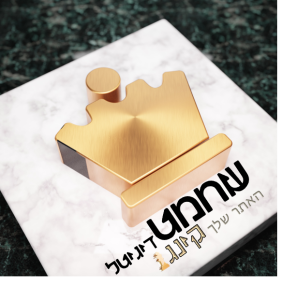The Passover Seder, like any other holiday meal, begins with the Kiddush, the sanctification of the day, followed by Urehatz, washing of the hands. Then comes eating the Karpas potatoes, celery, or parsley depending on tradition, dipped in salt water, at the very beginning of the evening. This is the first element that is unique to the Seder night celebration and one of the most mysterious ceremonies.
Some have explained the dipping of the Karpas to symbolize Joseph’s tunic being dipped into blood by his brothers. Karpas is therefore done at the beginning of the Seder, just as Joseph’s tunic being dipped into blood began the Israelites’ descent to Egypt. Indeed, the Brown-Driver-Briggs lexicon of Hebrew traces it to the Sanskrit word karpâsa, meaning cotton.
This ceremony, so we are told (Pesochim 114.b see Rashi and Rashbam), is to entice our children (and ourselves) to ask many questions. After the reciting of the Kiddush we would no doubt expect a proper meal like on Friday night or other Festivals. Instead we receive a small piece of vegetable dipped into salty water and are left hungry for a good part of the evening. No doubt this should make all of us ask some hard questions!
Without denying the importance of enticing our children (and ourselves) to arouse our curiosity, we still need to understand why our Sages decided to make us ask questions through the dipping and the eating of the Karpas and not as a result of any other ceremony. What is there in the ceremony of Karpas that we would otherwise lose? Why should it be this ceremony which gets our children and ourselves, to ask?
The word, Karpas has two meanings. One is related to a vegetable. In this case its translation is celery or parsley and this seems to be the meaning of the Haggada since we are told to partake of such a vegetable. The other interpretation, however, is that it is a piece of cotton or fine linen.
The last interpretation reminds us of a comment made by Rashi on the story concerning the hatred of the brothers towards Joseph (Bereshit 37:3). As we know, this hatred was caused by Yaacov’s giving Joseph a “ketonet pasim (a multi colored garment). Rashi (ad loc) states that the word “pasim” (many colored) is an expression of “Karpas and techelet,” which means green and light blue wool or linen. This statement reveals to us a secret behind the ceremony of Karpas and its dipping in a liquid. After Joseph had received this garment from his father, the brothers sold him to the Ishmaelites. This caused the beginning of the exile and slavery in Egypt. Whatever the deeper meaning of this hatred, it was unjustified and led to a lot of pain. Would Yaacov not have given the garment to Joseph, in all likelihood, the exile and servitude in Egypt would not have come about. There must have been lots of other indications of Yaacov showing favoritism to Joseph but this garment made from “Karpas and techeleth” was seemingly the trigger that led to the Egyptian enslavement.
When the Sages drew up the blueprint for the Haggada text they looked for a way in which they were able to draw attention to the fact that it was brotherly hate which caused the Jews to end up in Egypt. When realizing the fact that this infamous garment was made of “Karpas,” they decided to institute a ceremony that would involve the word, Karpas, and concluded that this was best served by using a vegetable of the same name. The Karpas is to be dipped into a liquid.
The brothers took this garment and dipped it into animal blood before they approached their father with the terrible news that Joseph had been killed. Our ceremony of dipping of Karpas into a liquid(in the past the liquid used for the dipping was red wine – representing blood as a result of blood libels against the Jews, the use of red wine was curtailed at the Seder and amongst Ashkenazi communities salt water was substituted. Wine is retained amongst Persian Jews) representing the blood of an animal is a subtle reminder of the hatred of the brothers and the sale of Joseph.
The sale of Joseph is alluded to in another custom at the beginning of the Seder of walking like desert nomads. Thus starting the Haggada with a reminder of the sale of Joseph. This custom is still practicedby some.Rabbi Shlomo Kluger (19th century) in Maaseh Yedei Yotzer, his commentary on the Haggada, quotes in the name of the Maharshal (16th century): “He should take the afikoman as it is wrapped in a cloth, put it behind his back, walk four cubits in his house and say, “Our forefathers walked so.” He goes on to explain that this ceremony was to recall the way the Ishmaelites walked in a caravan when Joseph was sold to them by his brothers. He then suggests that that is how we came to Egypt.
Still, one may wonder why the above is not explicitly mentioned in the Haggada. Why does it only allude to this in the form of a mysterious ceremony? Why not actually take a multicolored garment and bring it to the Seder table? And what is the purpose of making the readers of the Haggada aware of this on a subconscious level instead of bringing it to the surface? This indicates that the Chazal (our Sages) wished to hide this information while simultaneously hoping that the reader of the Haggadah would get the point. If the multicolored garment was indeed the cause par excellence of the entire Egyptian exile, why not mention it candidly and make sure that nobody would miss this crucial information?
The main point of the Jewish interpretation of the Exodus is to emphasize Divine Providence, i.e. God’s miraculous interference in the lives of the millions of Israelites who were stranded and enslaved in Egypt. Whatever happens is ultimately in God’s hands. This is the categorical goal of the Pesach (Passover) story. The Haggada attributes responsibility for the Exodus from Egypt to God alone and leaves no room for a human role. In the words of the Haggadah itself: “The Lord brought us out of Egypt not by an angel, not by a seraph, not by a messenger, but by the Holy One, blessed be He …”
This time it is not the story of the human role in history or to what extent Man had a hand in the shaping of all that happened. Of course, Jewish tradition constantly emphasizes that Man has to take responsibility for the consequences of his deeds, but the Pesach story operates on a different level. It is the triumph of God as the Lord of History that is celebrated.
We can never know which cause brought about which specific effect. When is something a cause and not the outcome of a still earlier event? Speaking in terms of the Egyptian enslavement, are we indeed able to say for sure that it was just the hatred of the brothers for Joseph that brought this servitude on the Israelites? Is it possible to claim that if the brothers would not have sold Joseph to Egypt that the Israelites would not have landed in Egypt? Was it not promised to Abraham that his children would be enslaved in a land that was not theirs (Bereshit 15:13)? Was the Egyptian experience not an essential condition and prerequisite so as to make the Children of Israel ready to receive the Torah? Was it not a necessary component in making the Jews into a special people and a “light unto the nations”? So, to what extent were the brothers really responsible for this exile?
It is for this reason that Chazal could not openly point their finger at the brothers. They could do nothing else but allude to this fact in the Haggada, telling us that somewhere on the road to Egypt the “Karpas garment” dipped in blood played a role.
To what extent we may never know. That the Karpas is eaten at the very beginning of the Haggada is most telling. It makes us aware straightaway that the inner story of what really caused the exile in Egypt will forever stay mysterious.At the end of the Seder we return again subtly to the story of the sale of Yoseph in accordance whith the custom of the Maharshal taking the afikoman wrapped in a cloth,and putting it behind ones backinthe way of the Ishmaelim travellers who bought Yoseph . These symbolic acts will indeed provoke many questions, but, however brilliant the answers, we will be left with the knowledge that on a higher plain, and beyond human understanding, it is the hand of God that holds the answers.
On the moral level the story should be clear. It was hatred between brothers that sent us into exile. How revealing that it was the love between two brothers, Moses and Aaron, living in total harmony, that brought about the Exodus.

 שחמט דיגיטל
שחמט דיגיטל